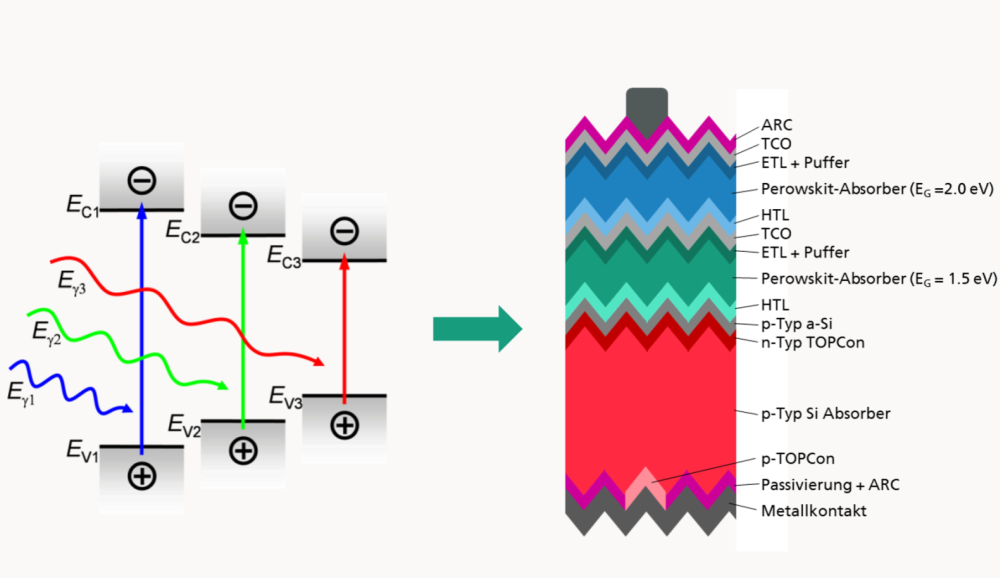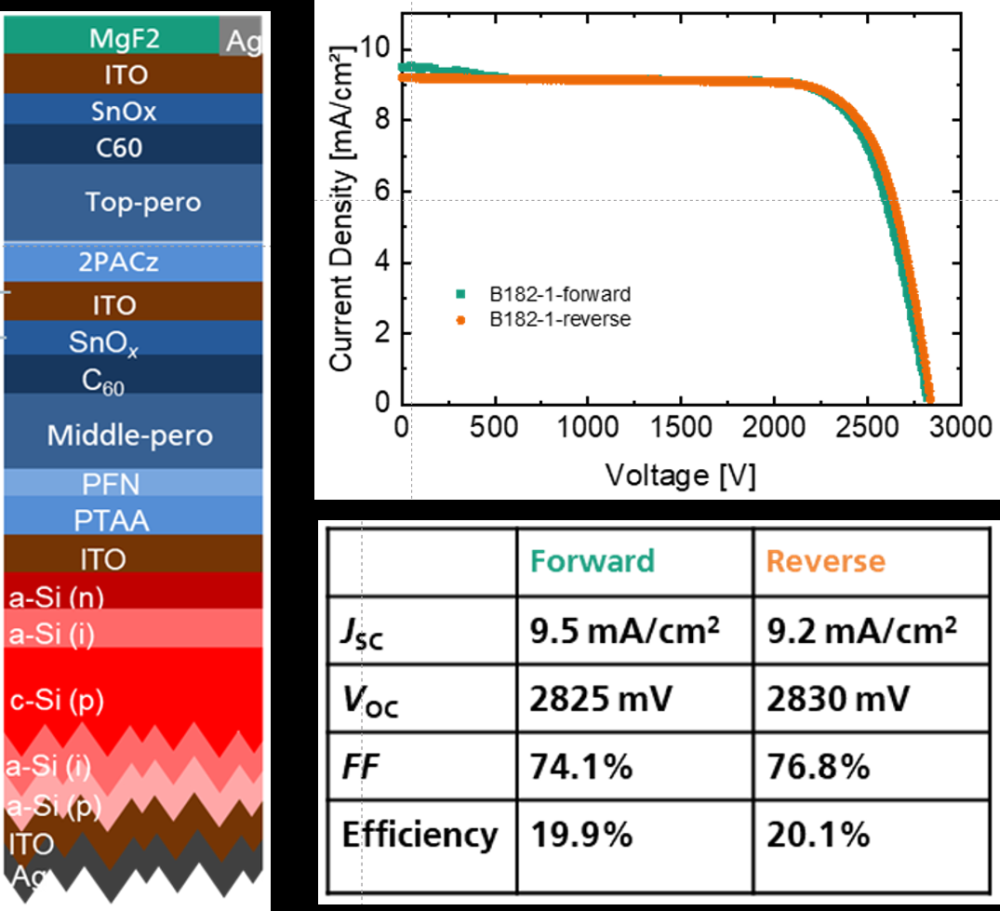| Duration: | 04/2022 - 03/2025 |
| Contracting Authority / Sponsors: | Federal Ministry of Economic Affairs and Climate Action (BMWK) |
| Project Partners: | Albert-Ludwigs-Universität Freiburg (ALU-FR) |
| Project Focus: |
RIESEN–Record Efficiencies for Double-Sided Silicon Solar Cells and Pero-Pero-Si Triple-Junction Solar Cells


The theoretical limit of 29.4% sets a clear limit to further increases in the efficiency of silicon single-junction solar cells. In order to further increase the efficiency, so-called tandem solar cells are necessary, in which overlaying solar cells with different band gaps make ideal use of the respective spectral components of the sunlight and thus significantly increase the efficiency potential. Due to the possibility of producing perovskite absorbers with different band gaps, as well as the other ideal material properties of perovskites, the combination of established Si technology with perovskite technology to form perovskite/Si tandem solar cells is considered the most promising option for the realization of multi-junction solar cells as the high-efficiency successor technology to Si single-junction solar cells. For a perovskite/perovskite/Si triple-junction solar cell for instance the theoretical efficiency is close to 50%.
In the »RIESEN« project, a highly efficient perovskite/perovskite/Si triple-junction solar cell is to be developed. For the Si subcell, the TOPCon record cells of Fraunhofer ISE will serve as a basis. Within the project this TOPCon cell will be further improved as a single junction solar cell and also be optimized as a Si subcell. For the perovskite middle and top cells, perovskite absorber layers with an ideal band gap of approx. 1.4 - 1.5 eV for the middle cell and 1.9 - 2.0 eV for the top cell are to be developed.
For the realization of these triple-junction solar cells in the 2-terminal configuration, the sub-cells must be appropriately monolithically interconnected which means that they need to have good mechanical, electrical and optical interconnects. For this purpose, corresponding recombination contacts as well as Si-based tunnel diodes are investigated. The technological development is accompanied by extensive simulation and characterization activities to investigate and understand the material characteristics as well as the device performance.
Important milestones of the project are the development of the individual perovskite absorbers with ideal bandgaps, the improvement of the Si bottom cell as well as the establishment of the individual developments into a highly efficient triple-junction perovskite/perovskite/Si solar cell.
As an important intermediate result, perovskite/perovskite/Si triple-junction solar cells with a voltage of more than 2.8 V could already be realized.